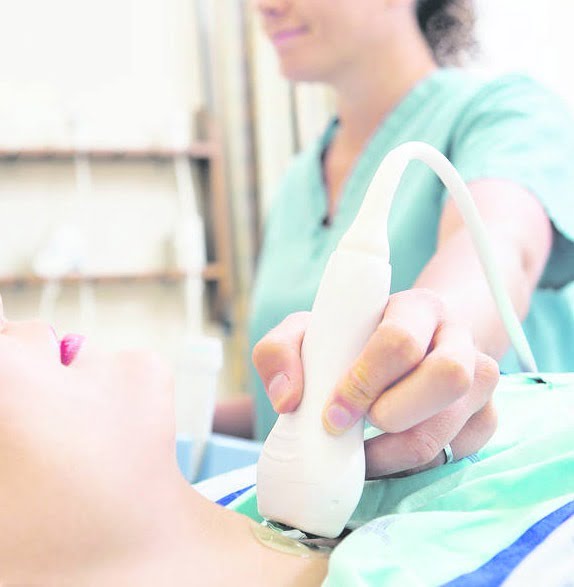Assessment of abdominal aortic aneurysms.
Ultrasound is regularly used to assess abdominal aortic aneurysms. It is an enlargement of the aorta, the main blood vessel that supplies blood from the heart to the rest of the body. The aorta is about 2.5 cm around the abdomen, but it can reach a size of over 5 cm.
Aneurysms are more common in men over the age of 65 than in women and younger men, and can be fatal as large aneurysms can rupture. According to NHS Choices, 8 out of 10 people with an aortic aneurysm die.
Small aneurysms are very unlikely to cause any symptoms, but a large aneurysm can cause the following symptoms:
- Intense pain in your back or stomach
- Fast pulse
- Nausea and vomiting
- Excessive sweating
- Although the causes are not fully understood, risk factors include obesity, high blood pressure, smoking, and high cholesterol
Abdominal aorta scan includes the assessment of:
- Abdominal aorta
- Hip vessels
Reasons for performing an ultrasound of the abdominal aorta:
- Intense pain in your back or stomach
- Pulsation, a ripple in the center of the abdomen
- Fast pulse
- Nausea and vomiting
- Excessive sweating
- Abdominal pain after a meal
Vascular ultrasound
Vascular ultrasound is performed to monitor blood flow to organs and tissues throughout the body, locating and identifying blockages and abnormalities such as blood clots or blockages.
Vascular ultrasound can also help identify areas of abnormal vasodilation (aneurysm) that, if left untreated, could lead to serious consequences.
A Doppler ultrasound scan can be part of an overall ultrasound scan. Doppler is a special ultrasound technique that assesses the speed and volume of blood flowing through a blood vessel, including the major arteries and veins in the abdomen, arms, legs, and neck. It can help diagnose blood flow blockages (such as clots, tumors, developmental anomalies), vasoconstriction (possibly caused by atherosclerosis), and tumors and birth defects.
The images are captured in real time, so this is a dynamic exam and the exam recording can help your doctor monitor blood flow to organs and tissues throughout the body.

